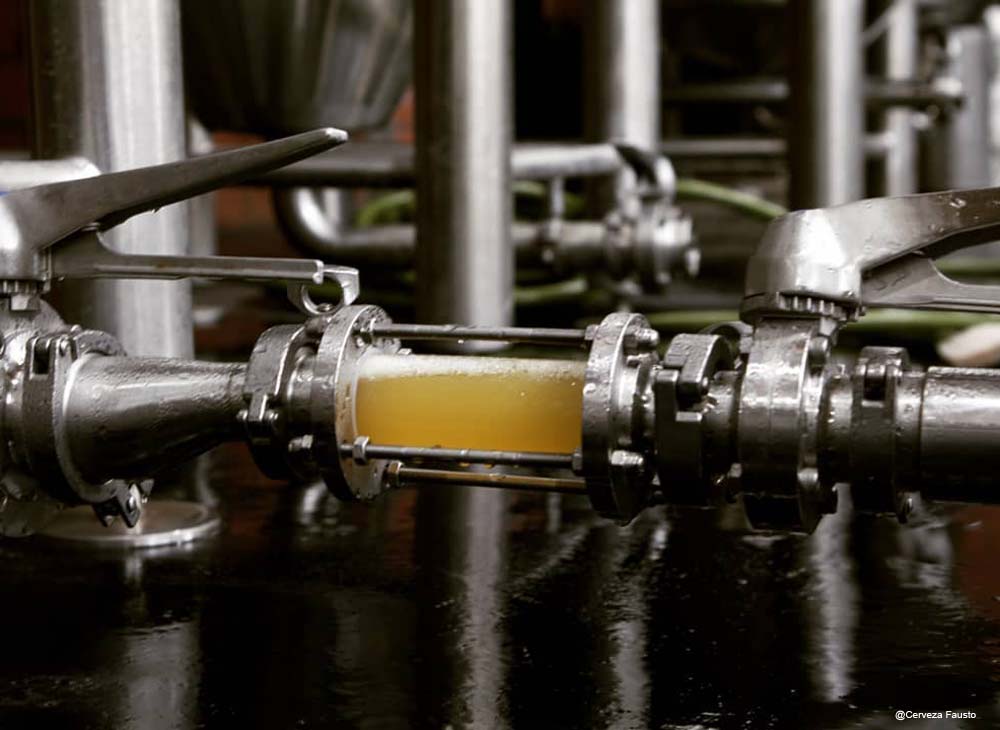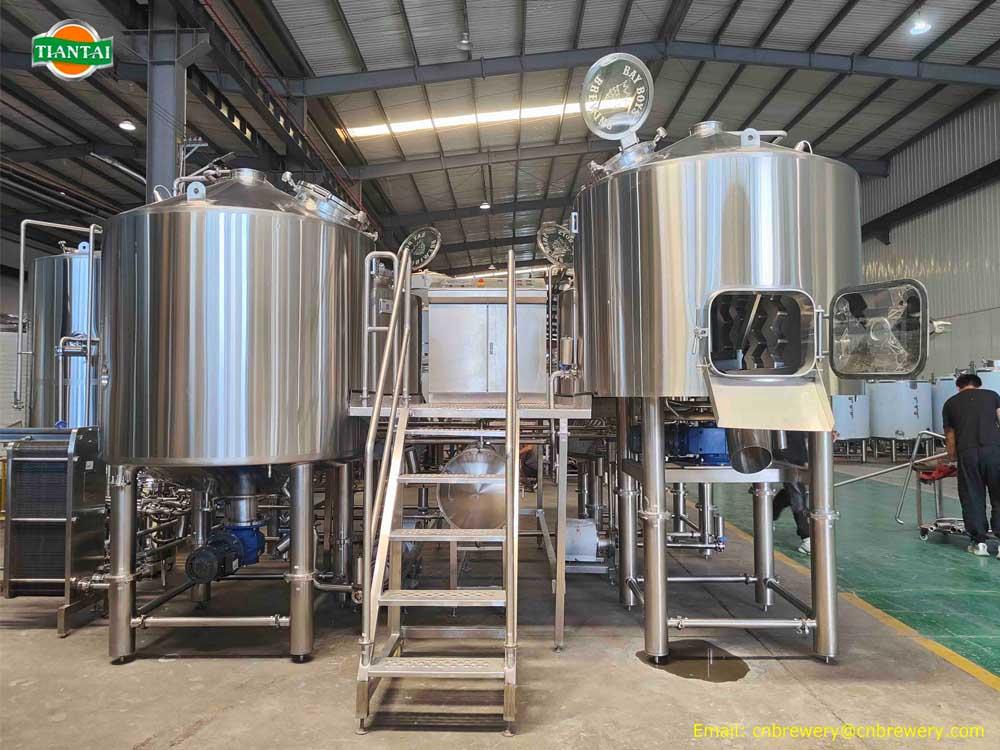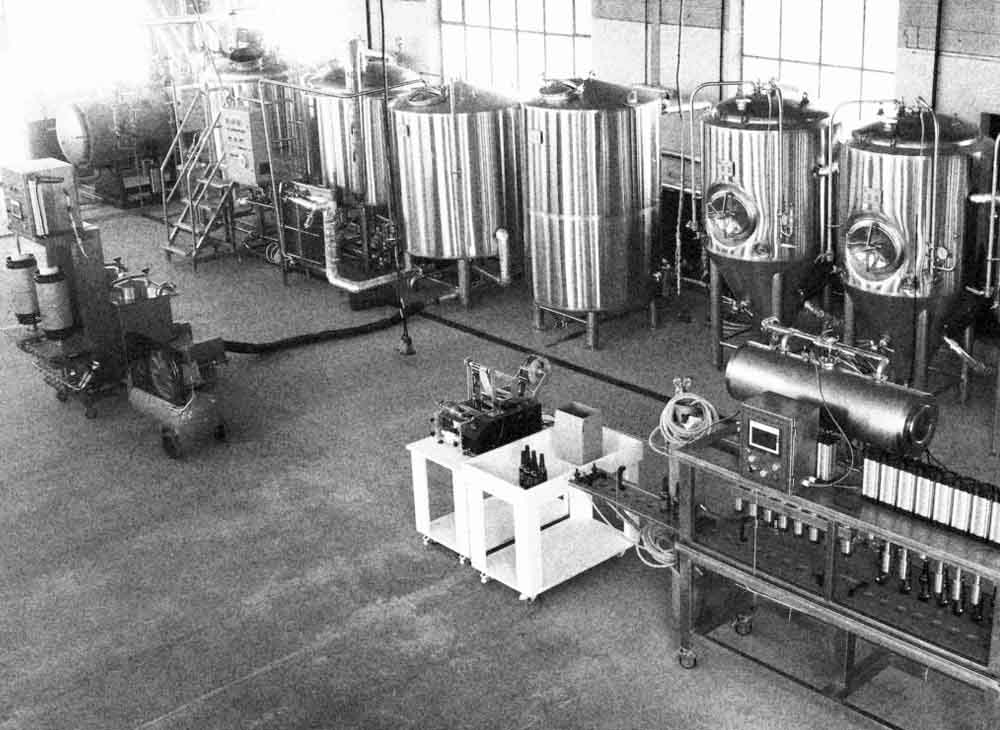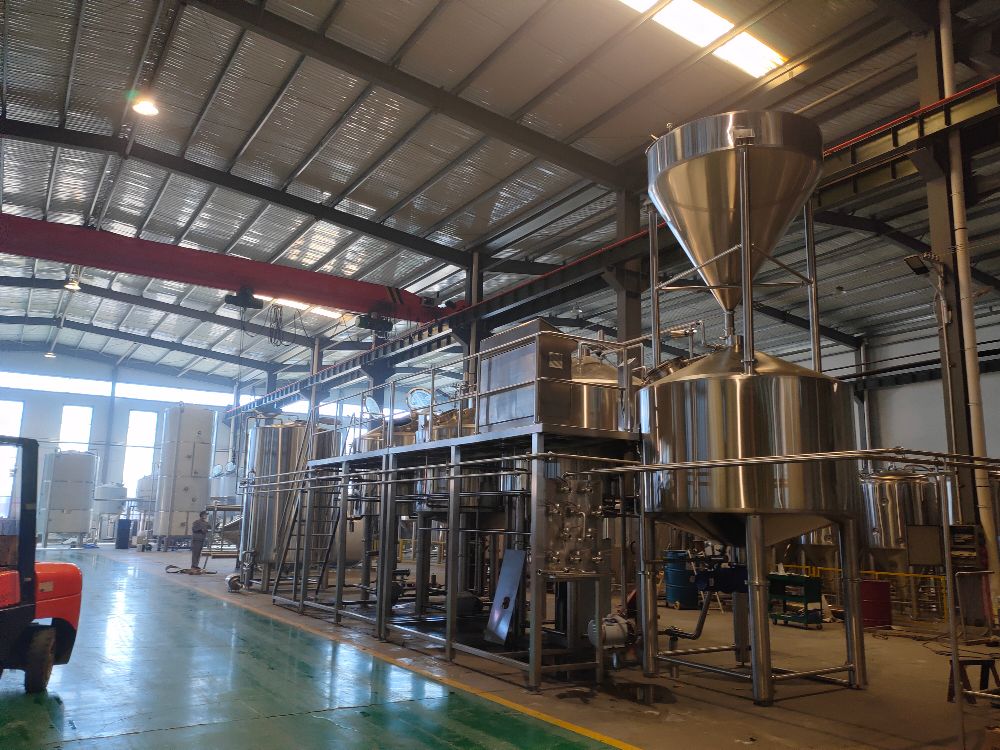How To Choose A Fermenter
- Dec 09, 2021
- 168
- tiantai
When it comes to the home brewing process, each step is a critical building-block in developing your brew’s desired flavor, aroma, mouthfeel, and level of clarity. However, no other step has the same impact on your final product as the fermentation process. You want everything to go right, from the initial yeast pitch to the final gravity check, and it all starts with choosing the right fermenter for your fermentation. While patience, precision, and practice (there’s no better teacher than an exploding glass carboy or a flat beer) are your best mentors, the right tools will help you achieve your brewing goals and get the job done.
A fermenter is a container that wort (the heated solution of grains, malts, and hops which create beer) is poured or siphoned into after cooling to begin primary (and sometimes secondary) fermentation. Different styles of fermenters will benefit different scenarios. Each brewer has a different end-goal in mind, be it trying a small, experimental home-brew or starting a budding basement brewery, and each brew is a new experience.
We here at More Beer! know that knowledge is power when it comes to brewing, so we’re going to discuss the pros and cons of each fermenter so that you can make an educated decision to benefit yourself, and your beer.
The Glass Carboy
The carboy comes in a multitude of different mediums, be it different types of plastic or glass. Glass carboys are one of, if not the most popular fermenters for home brewers, and it is a great piece of equipment for beginners. The glass carboy comes in a variety of different sizes, with 3, 5, 6, and 6.5 gallon carboys being our most popular. A 3 gallon glass carboy is a conveniently sized fermenter for a learning brewer or small-scale brewing, extra wort, or for portioning your brew into experimental batches. For example, you can separate your wort into separate batches and ferment each glass carboy with different yeast strains or flavor additives. The 1 gallon glass fermenters also come in jug form to easily transport and share your brew.
Graduating to a 5 gallon glass carboy or 6 gallon carboy is a great decision for a full-scale home brewing and will yield roughly 54 beers per 5 gallons—plenty to share with friends and family. The larger 6.5 gallon glass carboy is a great choice because it leaves plenty of room for krausen to expand.
What is Krausen?
Krausen is the layer of foam that forms on top of your fermenting brew. It quickly expands as the yeast becomes active and will be present until fermentation nears completion, roughly 1-2 weeks. Its dissipation is one sign, along with your hydrometer readings and the passage of time, that your brew is ready for the next step. However, if your krausen gets out of control, you may have a blowout.
A blowout is when an excess of krausen escapes the fermenter, and the release of pressure can be incredibly messy and violent and may even damage or destroy a carboy and its surroundings.
A blowout occurs for a variety of reasons, and each concurrent reason adds to your dilemma. If the fermentation is overactive due to an aggressive yeast strain, or because the temperature is too warm (anything about 68° F may encourage excessive yeast activity) a blowout may occur. Finally and most importantly, if there isn’t enough space left at the top of your fermenter for krausen to expand, you’ll be in trouble. Always leave extra space in your fermenter and monitor your brew room temperature. A 6 gallon glass carboy or 6.5 gallon carboy is an excellent choice for a 5 gallon brew.
Tip: Employing a blow off tube is an excellent idea if your brew fits any of the criteria above or simply as an insurance policy. To create a blow off tube, attach a sanitized, flexible tube to the stopper at the mouth of the fermenter. Submerge the other end of the tube into a container full of sanitizer. The container can be any sanitized vessel. At More Beer!, our home-brewers have used anything from a spare gallon jug to a well-cleaned wine bottle. As long as it keeps the tube submerged, it will work. This set-up will let the krausen escape your fermenter the easy way rather than the hard way.
Let’s review that benefits and downfalls of the glass carboy.
Glass Carboy Pros:
-Sturdy and tends to last longer than plastic fermenters
-Has a professional look
-Easy to clean
-Has a narrow neck for blowout tubes
-Non-porous and impermeable to oxygen—better for longer fermentations or aging
Glass Carboy Cons:
-Sizeable and much heavier to move than plastic
-Dangerous in a blowout or if dropped or broken
-Can be more expensive
The Plastic Carboy
A plastic carboy is a great option, and it is the choice of many first time brewers. Contrary to what you may think, a well-made plastic carboy won’t add any off flavors or odors to even the most sensitive of brews, and the colors and flavors won’t be imparted onto the plastic. High-quality plastic carboys are made of a unique polyethylene terephthalate copolymer (PET) plastic which makes it more durable than glass in many ways, especially when dropped. In addition, brewing grade plastic carboys are free of BPA, plasticizers, and DEHP—so safety should never be a concern.
Plastic carboys come in various sizes, and at MoreBeer!, our most popular are the 1, 3, 5 and 6 gallon carboys. We also carry plastic buckets with spigots which can be used conveniently as an all-in-one fermenter and a bottling bucket. The buckets and carboys often have lids with a hole conveniently made to fit an airlock.
Tip: Don’t forget the airlock for your fermenter. The airlock, which is inserted into the stopper at the mouth of the fermenter, allows carbon dioxide to escape and prevents air and other contaminants from entering. It can also be a useful gauge to measure how much fermentation is taking place. Airlocks come in two types, the 3-piece and s-shaped. Most brewers prefer the 3-piece for their carboy as they are much easier to clean if krausen gets inside.
Plastic Carboy Pros:
Some have wide openings for additives like fruit or dry-hops
Lighter and more mobile than glass
Won’t break and shatter like a glass carboy if they’re dropped
Generally inexpensive
Plastic Carboy Cons:
May not last as long as glass
Caution must be used when cleaning—if the plastic is scratched or scuffed, it can be easily contaminated and difficult to sanitize
The Demijohn
If you’re on your 5th beer, you may need to use the john. If you’re looking for a versatile, durable, light-blocking fermenter, you may need to use the demijohn. The demijohn is a product of Italy and has long been used to ferment wine, beer, vinegar, and kombucha. The glass fermenter is generally teardrop shaped which allows for more yeast to come in contact with your fermenting brew.
The demijohn’s signature feature is the protective woven basket. The basket is used to help protect the glass from cracking or shattering if it is hit. It also helps to prevent fermenting beer from light which can degrade taste, potency, and quality.
The variety of mouth opening sizes on the demijohn makes it a critical player in any brewing operation. A wide-mouthed demijohn is easier to clean. The smaller mouth demijohn is better for storage and ideal for brews that do not require additives.
Demijohn Pros:
Comes in a variety of uncommon sizes like 1.3 gallons, 2.6 gallons, up to 14 gallons
Basket protects from light degradation
Wide mouths are easy to scrub with a bottlebrush
Demijohn Cons:
Can be expensive
May be bulky and difficult to transport
Tip: Use a hydrometer to calculate the ABV of your beer. Take a gravity reading before fermentation and after fermentation. Subtract the original gravity from the final gravity for your ABV%.
The Conical Fermenter
If you’ve ever stepped into a brewery that has its operation on display, you’ve likely witnessed a towering conical fermenter. They are impressively beautiful, and most importantly, they’re extremely effective at fermenting beer. These works-of-art come in stainless steel and plastic constructs. We at MoreBeer! offer state-of-the-art conical fermenters from 7 to 42 gallons for the serious brewers and hobbyists. We also offer much larger professional grade conical fermenters, up to 60 bbl sizes! The conical fermenters are generally cylindrical at the top and fall into a cone (conical) shape at the bottom. The shape allows for a valve at the bottom for the removal of sediment without removing the wort. The conical fermenter can also be used for both the primary and secondary fermenting processes, as well as the aging functions. This greatly increases space conservation and saves a tremendous amount of time, especially if you’re a frequent brewer.
Some conical fermenters have options for temperature control, and they are able to withstand much more pressure than their carboy counterparts.
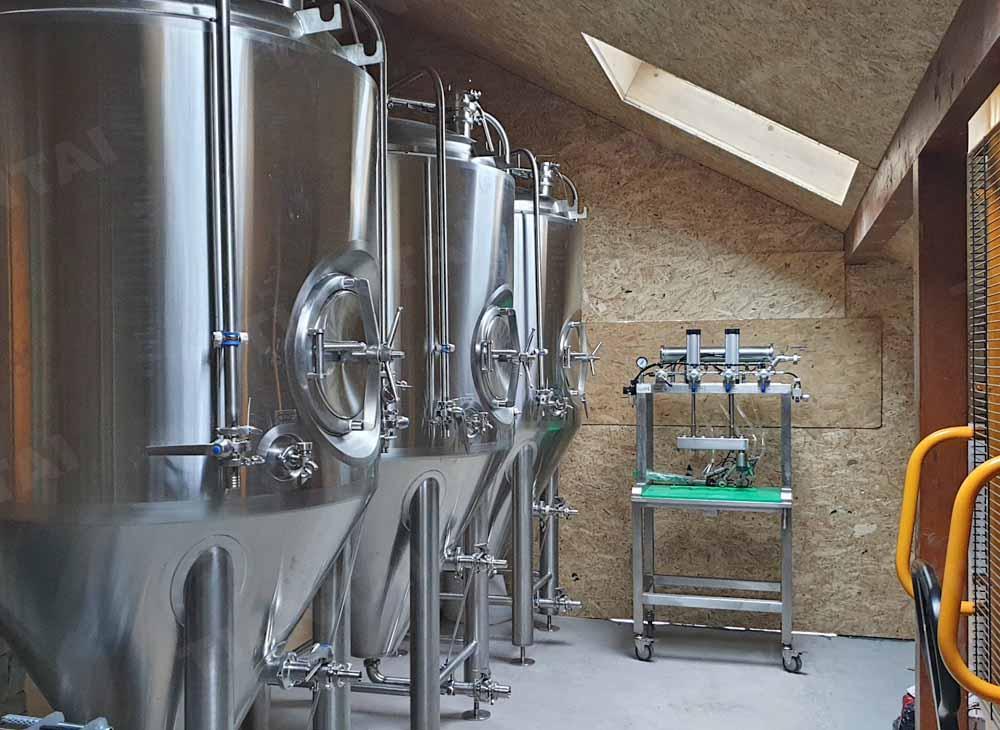
Conical Fermenter Pros:
Allow the entire fermentation process to take place in a single fermenter (no secondary needed for certain batches)
Stainless steel is easy to clean and can last a lifetime
No siphoning required
Conical Fermenter Cons:
Requires a larger area
Most expensive fermenter
More difficult to transport
Tip: Poor or lackadaisical sanitation ruins more brews than any other mistake. You can never be overly cautious. Sanitize multiple times to avoid a contamination.
The Speidel Fermenter
The Speidel Fermenter is a work of German ingenuity. It is a heavy-duty, high density polyethylene (HDPE) construct that comes complete with an airlock, built-in handles, a large, easy to clean lid, and a spigot. The material makes it harder to scratch than normal plastic carboys, without the heaviness or risk of breaking. It comes in a variety of sizes, from 12-500L (3.2-132 gallons)!
The biggest draw of the Speidel fermenter is its ability to ferment small and large batches in a single container. It also works well as a storage vessel as HDPE plastic resists oxygen transfer very well. In addition, the large opening on the top allows for easy yeast pitches, dry-hop additions, and cleaning. Its all-around versatility makes it one of the best options for both beginning and expert brewers alike.
Speidel Fermenter Pros:
Excellent start-to-finish fermenter
High-quality materials increase durability
Spigot makes it easy to taste, test, and transport
Size, additions, and large opening makes the brewing process more convenient
Speidel Fermenter Cons:
Still requires some caution when cleaning to avoid scratches, similar to a plastic carboy (yet definitely more resistant and durable)
More expensive than a plastic carboy
The Better Bottle
The better bottle is a well-known fermenter that claims to be better than glass, and in many regards, it is. The Better Bottle comes in 3, 5, and 6 gallon carboys. It is lightweight (a 6 gallon carboy weighs about 1.5 lbs), but it is still more durable than a normal plastic carboy due to its polyethylene terephthalate copolymer (PET) makeup. The PET construction allows for superior scuff resistance and strength when compared to normal plastics. It also is relatively impermeable to oxygen, which is important to avoid affecting wine or beer quality.
PET has also been proven as a safe plastic. It does not contain BPA or any other hazardous or unsafe materials, and it won’t release or absorb noticeable colors or flavors. The Better Bottle’s claim to fame, however, is its durability. During testing, the Better Bottle is filled to 90% capacity and dropped from a height of 1.6 meters onto a smooth concrete floor. If the carboy is undamaged after 5 drops, it is given a passing grade.
If you’re looking for a high-quality plastic that is a step above normal plastic carboys, the Better Bottle may be for you—especially if you’re tired of breaking your back carrying heavy fermenters!
Better Bottle Pros:
Won’t shatter like glass
Lightweight
Long history of high quality
Better Bottle Cons:
Shorter shelf-life than glass
Not completely scratch resistant
Only comes in a few sizes
Tip: You can’t make a terrible decision regardless of which fermenter you choose. Every day, successful home brewers use each and every variety of medium to brew their product. It all comes down to your personal style and brewing needs!
Derrick
Sales Manager
[email protected]
Tiantai Beer Equipment
A fermenter is a container that wort (the heated solution of grains, malts, and hops which create beer) is poured or siphoned into after cooling to begin primary (and sometimes secondary) fermentation. Different styles of fermenters will benefit different scenarios. Each brewer has a different end-goal in mind, be it trying a small, experimental home-brew or starting a budding basement brewery, and each brew is a new experience.
We here at More Beer! know that knowledge is power when it comes to brewing, so we’re going to discuss the pros and cons of each fermenter so that you can make an educated decision to benefit yourself, and your beer.
The Glass Carboy
The carboy comes in a multitude of different mediums, be it different types of plastic or glass. Glass carboys are one of, if not the most popular fermenters for home brewers, and it is a great piece of equipment for beginners. The glass carboy comes in a variety of different sizes, with 3, 5, 6, and 6.5 gallon carboys being our most popular. A 3 gallon glass carboy is a conveniently sized fermenter for a learning brewer or small-scale brewing, extra wort, or for portioning your brew into experimental batches. For example, you can separate your wort into separate batches and ferment each glass carboy with different yeast strains or flavor additives. The 1 gallon glass fermenters also come in jug form to easily transport and share your brew.
Graduating to a 5 gallon glass carboy or 6 gallon carboy is a great decision for a full-scale home brewing and will yield roughly 54 beers per 5 gallons—plenty to share with friends and family. The larger 6.5 gallon glass carboy is a great choice because it leaves plenty of room for krausen to expand.
What is Krausen?
Krausen is the layer of foam that forms on top of your fermenting brew. It quickly expands as the yeast becomes active and will be present until fermentation nears completion, roughly 1-2 weeks. Its dissipation is one sign, along with your hydrometer readings and the passage of time, that your brew is ready for the next step. However, if your krausen gets out of control, you may have a blowout.
A blowout is when an excess of krausen escapes the fermenter, and the release of pressure can be incredibly messy and violent and may even damage or destroy a carboy and its surroundings.
A blowout occurs for a variety of reasons, and each concurrent reason adds to your dilemma. If the fermentation is overactive due to an aggressive yeast strain, or because the temperature is too warm (anything about 68° F may encourage excessive yeast activity) a blowout may occur. Finally and most importantly, if there isn’t enough space left at the top of your fermenter for krausen to expand, you’ll be in trouble. Always leave extra space in your fermenter and monitor your brew room temperature. A 6 gallon glass carboy or 6.5 gallon carboy is an excellent choice for a 5 gallon brew.
Tip: Employing a blow off tube is an excellent idea if your brew fits any of the criteria above or simply as an insurance policy. To create a blow off tube, attach a sanitized, flexible tube to the stopper at the mouth of the fermenter. Submerge the other end of the tube into a container full of sanitizer. The container can be any sanitized vessel. At More Beer!, our home-brewers have used anything from a spare gallon jug to a well-cleaned wine bottle. As long as it keeps the tube submerged, it will work. This set-up will let the krausen escape your fermenter the easy way rather than the hard way.
Let’s review that benefits and downfalls of the glass carboy.
Glass Carboy Pros:
-Sturdy and tends to last longer than plastic fermenters
-Has a professional look
-Easy to clean
-Has a narrow neck for blowout tubes
-Non-porous and impermeable to oxygen—better for longer fermentations or aging
Glass Carboy Cons:
-Sizeable and much heavier to move than plastic
-Dangerous in a blowout or if dropped or broken
-Can be more expensive
The Plastic Carboy
A plastic carboy is a great option, and it is the choice of many first time brewers. Contrary to what you may think, a well-made plastic carboy won’t add any off flavors or odors to even the most sensitive of brews, and the colors and flavors won’t be imparted onto the plastic. High-quality plastic carboys are made of a unique polyethylene terephthalate copolymer (PET) plastic which makes it more durable than glass in many ways, especially when dropped. In addition, brewing grade plastic carboys are free of BPA, plasticizers, and DEHP—so safety should never be a concern.
Plastic carboys come in various sizes, and at MoreBeer!, our most popular are the 1, 3, 5 and 6 gallon carboys. We also carry plastic buckets with spigots which can be used conveniently as an all-in-one fermenter and a bottling bucket. The buckets and carboys often have lids with a hole conveniently made to fit an airlock.
Tip: Don’t forget the airlock for your fermenter. The airlock, which is inserted into the stopper at the mouth of the fermenter, allows carbon dioxide to escape and prevents air and other contaminants from entering. It can also be a useful gauge to measure how much fermentation is taking place. Airlocks come in two types, the 3-piece and s-shaped. Most brewers prefer the 3-piece for their carboy as they are much easier to clean if krausen gets inside.
Plastic Carboy Pros:
Some have wide openings for additives like fruit or dry-hops
Lighter and more mobile than glass
Won’t break and shatter like a glass carboy if they’re dropped
Generally inexpensive
Plastic Carboy Cons:
May not last as long as glass
Caution must be used when cleaning—if the plastic is scratched or scuffed, it can be easily contaminated and difficult to sanitize
The Demijohn
If you’re on your 5th beer, you may need to use the john. If you’re looking for a versatile, durable, light-blocking fermenter, you may need to use the demijohn. The demijohn is a product of Italy and has long been used to ferment wine, beer, vinegar, and kombucha. The glass fermenter is generally teardrop shaped which allows for more yeast to come in contact with your fermenting brew.
The demijohn’s signature feature is the protective woven basket. The basket is used to help protect the glass from cracking or shattering if it is hit. It also helps to prevent fermenting beer from light which can degrade taste, potency, and quality.
The variety of mouth opening sizes on the demijohn makes it a critical player in any brewing operation. A wide-mouthed demijohn is easier to clean. The smaller mouth demijohn is better for storage and ideal for brews that do not require additives.
Demijohn Pros:
Comes in a variety of uncommon sizes like 1.3 gallons, 2.6 gallons, up to 14 gallons
Basket protects from light degradation
Wide mouths are easy to scrub with a bottlebrush
Demijohn Cons:
Can be expensive
May be bulky and difficult to transport
Tip: Use a hydrometer to calculate the ABV of your beer. Take a gravity reading before fermentation and after fermentation. Subtract the original gravity from the final gravity for your ABV%.
The Conical Fermenter
If you’ve ever stepped into a brewery that has its operation on display, you’ve likely witnessed a towering conical fermenter. They are impressively beautiful, and most importantly, they’re extremely effective at fermenting beer. These works-of-art come in stainless steel and plastic constructs. We at MoreBeer! offer state-of-the-art conical fermenters from 7 to 42 gallons for the serious brewers and hobbyists. We also offer much larger professional grade conical fermenters, up to 60 bbl sizes! The conical fermenters are generally cylindrical at the top and fall into a cone (conical) shape at the bottom. The shape allows for a valve at the bottom for the removal of sediment without removing the wort. The conical fermenter can also be used for both the primary and secondary fermenting processes, as well as the aging functions. This greatly increases space conservation and saves a tremendous amount of time, especially if you’re a frequent brewer.
Some conical fermenters have options for temperature control, and they are able to withstand much more pressure than their carboy counterparts.

Conical Fermenter Pros:
Allow the entire fermentation process to take place in a single fermenter (no secondary needed for certain batches)
Stainless steel is easy to clean and can last a lifetime
No siphoning required
Conical Fermenter Cons:
Requires a larger area
Most expensive fermenter
More difficult to transport
Tip: Poor or lackadaisical sanitation ruins more brews than any other mistake. You can never be overly cautious. Sanitize multiple times to avoid a contamination.
The Speidel Fermenter
The Speidel Fermenter is a work of German ingenuity. It is a heavy-duty, high density polyethylene (HDPE) construct that comes complete with an airlock, built-in handles, a large, easy to clean lid, and a spigot. The material makes it harder to scratch than normal plastic carboys, without the heaviness or risk of breaking. It comes in a variety of sizes, from 12-500L (3.2-132 gallons)!
The biggest draw of the Speidel fermenter is its ability to ferment small and large batches in a single container. It also works well as a storage vessel as HDPE plastic resists oxygen transfer very well. In addition, the large opening on the top allows for easy yeast pitches, dry-hop additions, and cleaning. Its all-around versatility makes it one of the best options for both beginning and expert brewers alike.
Speidel Fermenter Pros:
Excellent start-to-finish fermenter
High-quality materials increase durability
Spigot makes it easy to taste, test, and transport
Size, additions, and large opening makes the brewing process more convenient
Speidel Fermenter Cons:
Still requires some caution when cleaning to avoid scratches, similar to a plastic carboy (yet definitely more resistant and durable)
More expensive than a plastic carboy
The Better Bottle
The better bottle is a well-known fermenter that claims to be better than glass, and in many regards, it is. The Better Bottle comes in 3, 5, and 6 gallon carboys. It is lightweight (a 6 gallon carboy weighs about 1.5 lbs), but it is still more durable than a normal plastic carboy due to its polyethylene terephthalate copolymer (PET) makeup. The PET construction allows for superior scuff resistance and strength when compared to normal plastics. It also is relatively impermeable to oxygen, which is important to avoid affecting wine or beer quality.
PET has also been proven as a safe plastic. It does not contain BPA or any other hazardous or unsafe materials, and it won’t release or absorb noticeable colors or flavors. The Better Bottle’s claim to fame, however, is its durability. During testing, the Better Bottle is filled to 90% capacity and dropped from a height of 1.6 meters onto a smooth concrete floor. If the carboy is undamaged after 5 drops, it is given a passing grade.
If you’re looking for a high-quality plastic that is a step above normal plastic carboys, the Better Bottle may be for you—especially if you’re tired of breaking your back carrying heavy fermenters!
Better Bottle Pros:
Won’t shatter like glass
Lightweight
Long history of high quality
Better Bottle Cons:
Shorter shelf-life than glass
Not completely scratch resistant
Only comes in a few sizes
Tip: You can’t make a terrible decision regardless of which fermenter you choose. Every day, successful home brewers use each and every variety of medium to brew their product. It all comes down to your personal style and brewing needs!
Derrick
Sales Manager
[email protected]
Tiantai Beer Equipment

